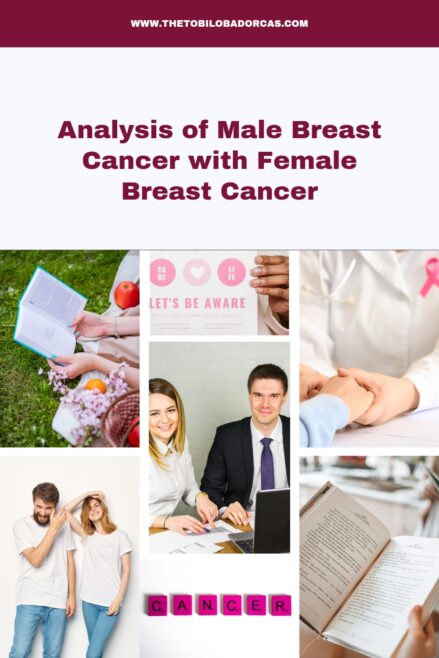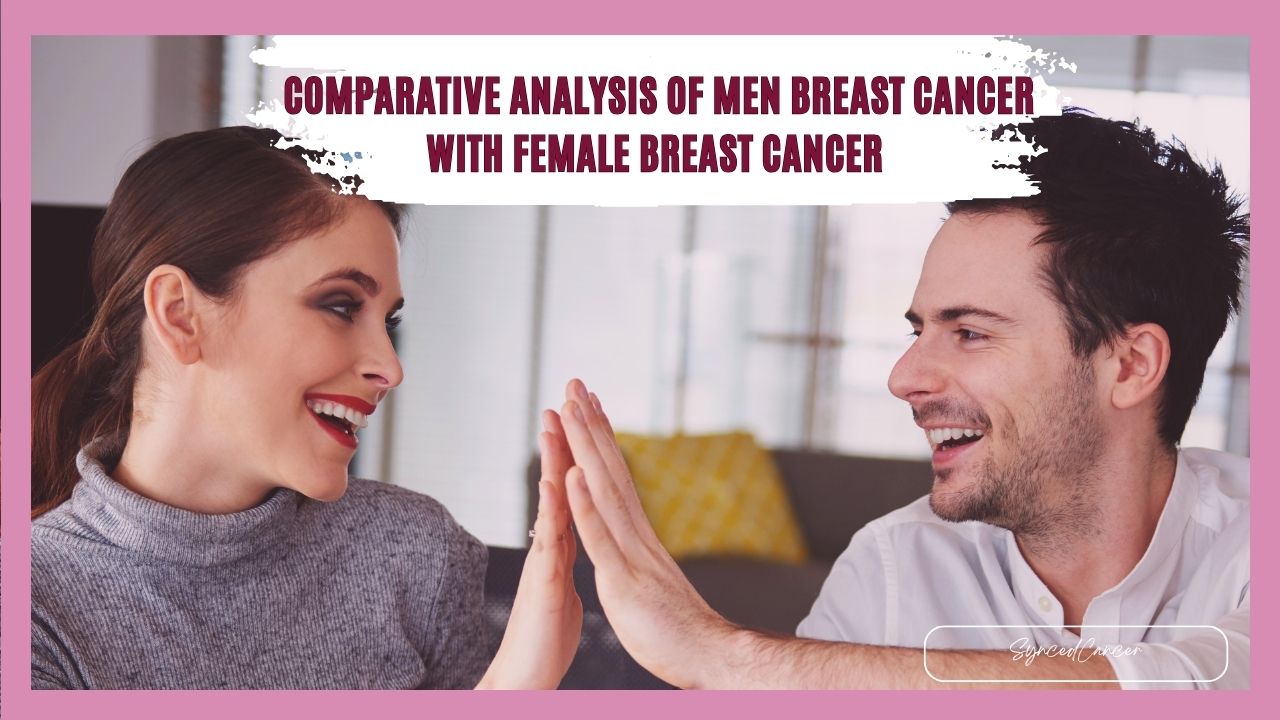Breast cancer is predominantly seen as a disease that affects women, yet men can also develop this condition, albeit at a much lower incidence. The fundamental biological mechanisms and treatment protocols for breast cancer are largely similar for both genders, but the disease manifests and impacts men and women in distinct ways. This comparative analysis explores these dimensions to provide a comprehensive understanding of the differences and similarities, encompassing aspects such as incidence rates, risk factors, symptoms, diagnosis, treatment options, and psychosocial impacts.
Incidence and Epidemiology
- Incidence: Breast cancer is far more common in women than in men In Nigeria, breast cancer is a major health concern for women, with a high prevalence rate. In contrast, male breast cancer is rare, constituting less than 1% of all breast cancer cases. This stark difference in incidence means that awareness and research have historically been more focused on female breast cancer.
- Age of Onset: Female breast cancer can occur at any age but is most common after the age of 50. In men, breast cancer typically presents later, often diagnosed between the ages of 60 and 70.

Risk Factors
- Genetic Factors: Both men and women with mutations in the BRCA1 and BRCA2 genes have an increased risk of developing breast cancer. However, men with these mutations have a significantly lower risk compared to women. Other genetic conditions, such as Klinefelter syndrome, can also increase the risk in men.
- Hormonal Factors: Estrogen plays a crucial role in breast cancer development. Women’s risk is influenced by factors that affect hormone levels, such as age at menstruation onset, menopause, and use of hormone replacement therapy. In men, conditions that increase estrogen levels, such as liver disease or estrogen-containing medications, are risk factors.
- Lifestyle Factors: Obesity, alcohol consumption, and radiation exposure are risk factors for both men and women. However, their relative impact may vary due to differences in prevalence and hormonal environments between sexes.
Diagnosis and Symptoms
- Symptom: Both men and women typically present with similar symptoms, such as a lump in the breast, changes in nipple appearance, or nipple discharge. However, because men have less breast tissue, tumors are often easier to detect but may also be mistaken for benign conditions, leading to delays in diagnosis.
- Diagnosis: Women are more likely to undergo regular screening mammograms, leading to earlier detection. Men, lacking routine screening, are usually diagnosed at more advanced stages. This late detection contributes to worse outcomes in men compared to women.
Treatment Modalities
- Surgery: Both men and women commonly undergo surgery as part of their treatment. Mastectomy, where the breast tissue is removed, is a frequent procedure. In men, due to smaller breast size, mastectomy is more common than breast-conserving surgery.
- Radiation Therapy: Used in both men and women, radiation therapy aims to eliminate any remaining cancer cells post-surgery. Its application and dosage depend on the cancer stage and type.
- Chemotherapy and Hormonal Therapy: Chemotherapy is utilized similarly in men and women, based on tumor characteristics and stage. Hormonal therapy, particularly with drugs like tamoxifen, is critical in both sexes for hormone receptor-positive cancers. Given that most male breast cancers are hormone receptor-positive, hormonal therapy plays a substantial role in treatment.
- Targeted Therapy: Targeted therapies, such as those targeting HER2-positive cancers, are used in both men and women. The availability and use of these treatments depend on the specific characteristics of the tumor.
Prognosis and Outcomes
- Survival Rates: Women generally have higher survival rates compared to men, primarily due to earlier detection and greater awareness. Five-year survival rates for women with breast cancer have improved significantly with advances in screening and treatment. In contrast, men often face poorer prognoses due to advanced-stage diagnosis.
- Recurrence: The risk of recurrence is influenced by tumor stage, type, and treatment efficacy. While both men and women face the possibility of recurrence, the late-stage diagnosis in men often results in higher recurrence rates compared to women. The comprehensive follow-up care and monitoring essential for detecting recurrence early are crucial for both genders but may be more challenging in men due to less frequent engagement with healthcare services post-treatment.
Psychosocial Impact
- Emotional and Psychological Effects: The emotional burden of a breast cancer diagnosis is profound for both men and women, involving anxiety, depression, and fear of recurrence. However, men may experience unique challenges due to the perception of breast cancer as a predominantly female disease. This can lead to feelings of isolation, embarrassment, and stigma, which can exacerbate psychological distress.
- Support Systems: Women typically have access to extensive support networks, including support groups, counseling services, and community resources specifically designed for breast cancer patients. Men, however, may find it difficult to access similar support due to the rarity of the condition in males and the lack of male-specific resources. This can lead to feelings of being misunderstood and unsupported.
- Body Image and Self-Identity: Both men and women undergo significant changes in body image due to surgical interventions like mastectomy. For women, the loss of a breast can affect their femininity and sexual identity, while for men, the impact on masculinity and body image can be equally distressing. The societal expectations around gender and health can intensify these feelings, making it crucial for healthcare providers to address body image concerns in both sexes.
- Impact on Relationships: Breast cancer affects intimate relationships and family dynamics for both men and women. Partners may struggle with changes in physical appearance, sexual function, and emotional health. Open communication and mutual support are vital for maintaining healthy relationships, but men may find it harder to discuss their vulnerabilities and seek help, further straining relationships.
Awareness and Advocacy
- Public Awareness Campaigns: There is a significant disparity in public awareness of breast cancer in men versus women. Public health campaigns predominantly target women, emphasizing the importance of regular screenings and early detection. Increasing awareness about male breast cancer through inclusive campaigns can help reduce stigma and promote earlier diagnosis in men.
- Research and Funding: The majority of breast cancer research and funding is directed towards female breast cancer. While this is understandable given its prevalence, there is a critical need for more research on male breast cancer to understand its unique aspects and improve outcomes. Advocacy for equitable research funding is essential to address this gap.
- Education for Healthcare Providers: Healthcare providers need to be educated about the possibility of breast cancer in men to ensure timely diagnosis and appropriate treatment. Sensitivity training can help providers better understand the psychosocial challenges faced by male patients and offer compassionate, tailored care.
Conclusion
The comparative analysis of male and female breast cancer reveals both commonalities and significant differences. While the biological and treatment aspects share many similarities, the psychosocial impacts and challenges differ markedly due to gender-specific perceptions and societal norms. Addressing these differences through increased awareness, targeted support systems, and dedicated research is crucial for improving outcomes and quality of life for both men and women affected by breast cancer. By fostering an inclusive approach to breast cancer care and advocacy, we can ensure that all patients receive the comprehensive support and treatment they need.
REFERENCES
Reference – https://www.cancercenter.com/community/blog/2022/10/whats-the-difference-female-male-breast-cancer#:
Assessed 25th May, 2024



What do you think?
It is nice to know your opinion. Leave a comment.